Most skaters know the commonly accepted story of how modern skateboarding was invented and popularized: In the 1950s, surfers who wanted to experience the sensation of riding waves on concrete started to disassemble roller skates and attach them to wooden boards.
Surf shops and manufacturers began producing skateboards to capitalize on this newly forming market in the early 1960s. These boards looked like small surfboards. Skateboarding’s popularity expanded and by the mid-60’s skateboard manufacturers were pulling in millions of dollars, and the story goes on through decades of ups and downs and eventually arrives at today.
However, ample evidence exists that suggests the skateboard might be a much more historic instrument than it is usually considered to be – more than just surf bros in California.
The very last page of Dave Carnie’s book, Boob contains a short piece printed sideways called “Texel” which contains accounts of Nazi Soldiers using skateboard-like devices during WWII. I was so interested in the idea that I began my own research and found further video of the Goebbels and Rommel families using a crude “skateboard” and ramp. It looked to me like the board was a manufactured device, and they improvised the ramp. Upon further research I found it was what’s known as a “coaster toy”, which had existed since the turn of the century, a summertime answer to sleds and downhill runs in unwieldy Radio Flyer wagons. They were sometimes even called land sleds, and were meant for the user to sit on and careen wildly down hills, as anyone who has sat on a skateboard and rolled downhill can attest to.
Surely some stupid or drunk fucker tried to stand up on the thing?
”That piece contains accounts of Nazi soldiers using skateboard-like devices during WWII”
Coaster toys are briefly discussed as precursors for skateboards in many texts, including Iain Borden’s Skateboarding, Space and the City: Architecture and the Body, the super scholarly and insanely dry study on skateboarding and architectural space. Borden mentions the Kne-Koster:
“Patented in 1925 “Kne-Koster… was the first coaster toy with an independent trucking system… roller skate trucks offered bushing-assisted turning,”
The same device is also discussed on www.flexy-racer.com, along with other coaster toys at greater length. That’s how I was led there. I began email exchanges with the webmaster of Flexy-Racer.com to find out if he and his friends ever tried to stand up on coaster toys. Dale Caldwell, owner and curator, said it was not uncommon to try and stand on a Flexy on a mellow slope. Dale’s website contains many stories sent in from Flexy users of years past. Some parallel skating to an uncanny degree:
Bruce T Martens: “We would ride down the wide sidewalks; I can still hear the sounds of the Flexy passing over the grooves in the concrete.”
Bruce Day: “I searched throughout the neighborhood for the steepest and longest hill just to prolong the rush…”
Bob Eisenstark: “A few Chuck Taylors were worn down in those years.”
Gordon Babbit: “Not only did we ride it on our sloped front sidewalk, but also down a steeper gravel driveway where we would set up jumps using plywood and an old wooden fruit box.”
And most significantly,
George Graeber: “We figured we were doing about 50-60mph when we went down Hwy 9 just west of Stanford University. Even passed a car once… Ken Beto decided to ride his Flexy standing up like a surfboard. It never occurred to us that you could do it, but because of the slow speeds going down a pasture it seemed to work. Ken nearly ate it that night when he surfed into a barb wire fence. He took out the fence. That was it. We were done.”
Dale sent me a shitload of patents from as far back as 1908 that are coaster toys, some with no handles and turning trucks. The patents that I found are often filed as an “Amusement Device”. Many of them are weird skateboardish offshoots of scooters; lost and arcane species of the skate evolutionary line from the Cambrian Explosion of rolling toys. All of the patents presented here are pre-war, and thus pre-history in a skating sense. There’s even a patent for a board that attaches to roller-skates from 1917, long before someone thought of the same idea in the early 50s.
Kids have been causing a ruckus on their rolling toys for at least a century. An article in the NY Times from May 21, 1893 bears the headline “DANGEROUS SPORT IN BROOKLYN: Coasting on Lincoln Place May Some Time Lead to Loss of Life”. In the article, neighborhood kids are said to have:
“…gathered on Lincoln Place with little four-wheeled carts, on which they have coasted down the middle of the street. Several minor accidents have occurred, but no bones have been broken yet. The momentum with which the boys roll down the asphalt pavement is equal to the speed of a railway train, and there are many narrow escapes from collision with the street cars on Seventh Avenue…
…The sport is exciting, but it is extremely hazardous and dangerous. The coasters pay no attention to the protests of the people who live along Lincoln Place. The presence of a policeman on the street who would confiscate the dangerous little carts would no doubt avert the occurrence of a fatal accident, which sooner or later will happen.”
We are talking about little boys and girls bombing hills into traffic, pissing off residents, and there’s talk of calling the cops to take everyone’s set ups? Sounds like the primordial genesis of street skating to me.
In fact every average Joe that had a coaster toy or scooter in baby boomer America says he stood up on it and invented skateboarding (ask Jack Smith, the curator at Morro Bay CA Skate Museum, I saw one such guy walk in and claim it while I was browsing). Coaster toys and early skateboard-like devices had already existed for decades by the time kids were “tearing up their sisters roller skates” in our accepted 1950’s skate history.
Surfing is an obvious precursor to skating. The inspiration was clearly there but to say we owe it everything is an overstatement. Historically surfing was the sport/art form of Hawaiian kings. The best surfer on the island was the chief, and the ruling class enjoyed access to the finest waves and boards. Skateboarding at its root is the captivation of the common person: A bored city kid with ingenuity, curiosity and perhaps a reckless spirit.
Related Posts
Comments
Popular
-
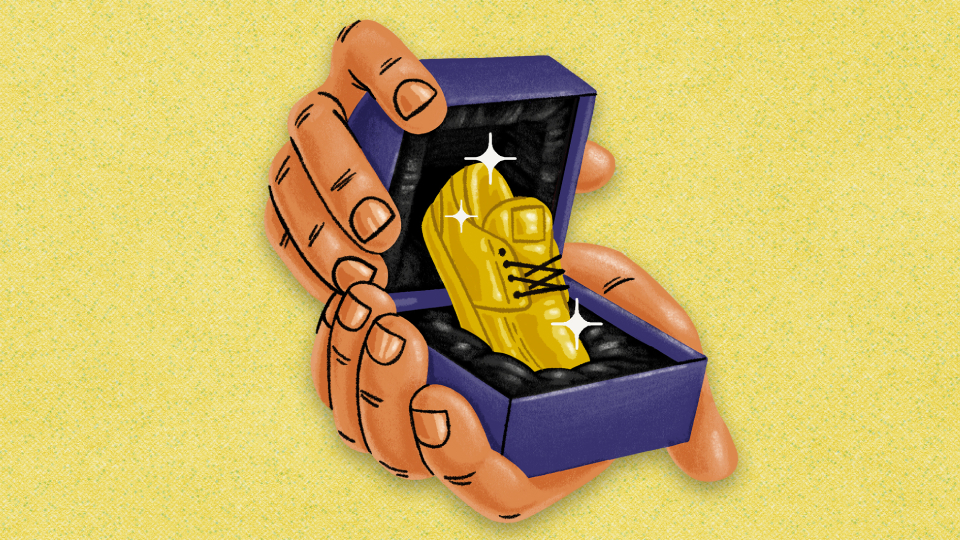 THE RISE AND FALL OF PRO MODEL SKATE SHOES
THE RISE AND FALL OF PRO MODEL SKATE SHOES
While there are still some exceptions, the signature shoe has largely evaporated from the skateboard industry. But, why?
-
 A CHAT WITH LUDVIG HAKANSSON, THE OLDEST SOUL IN SKATEBOARDING
A CHAT WITH LUDVIG HAKANSSON, THE OLDEST SOUL IN SKATEBOARDING
The man loves to read Nietzche, skates in some expensive vintage gear, and paints in his own neoclassical-meets-abstract-expressionist style.
-
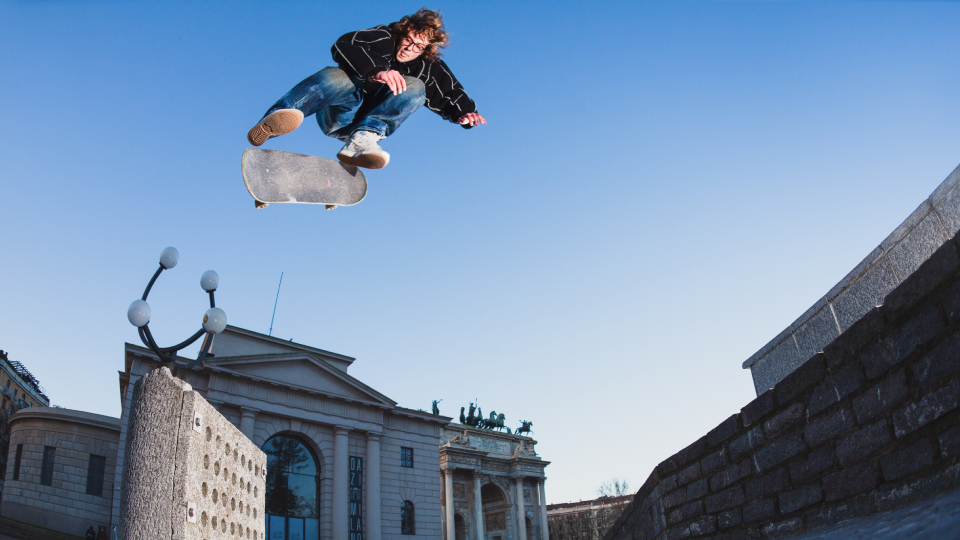 A LOOK THROUGH THE GLASSES OF VINCE PALMER, AKA CHICKEN LITTLE
A LOOK THROUGH THE GLASSES OF VINCE PALMER, AKA CHICKEN LITTLE
Get to know the 18-year-old German repping Baker and Supreme in Milan.
-
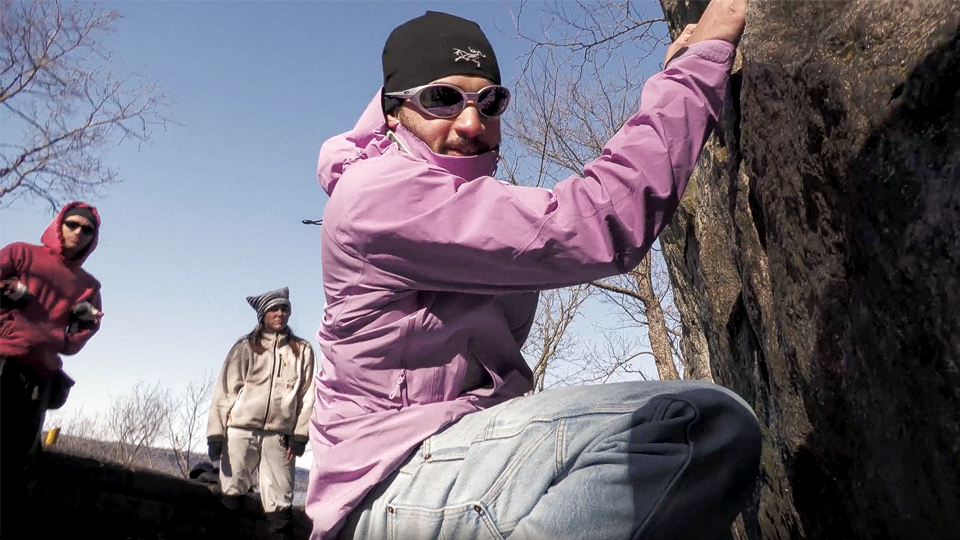 WHO ARE THE SKATERS RESURRECTING ROCK CLIMBING IN UPPER MANHATTAN?
WHO ARE THE SKATERS RESURRECTING ROCK CLIMBING IN UPPER MANHATTAN?
We met up with Joel Popoteur, an employee at Supreme and long-time skater to learn about his outdoor movement.
-
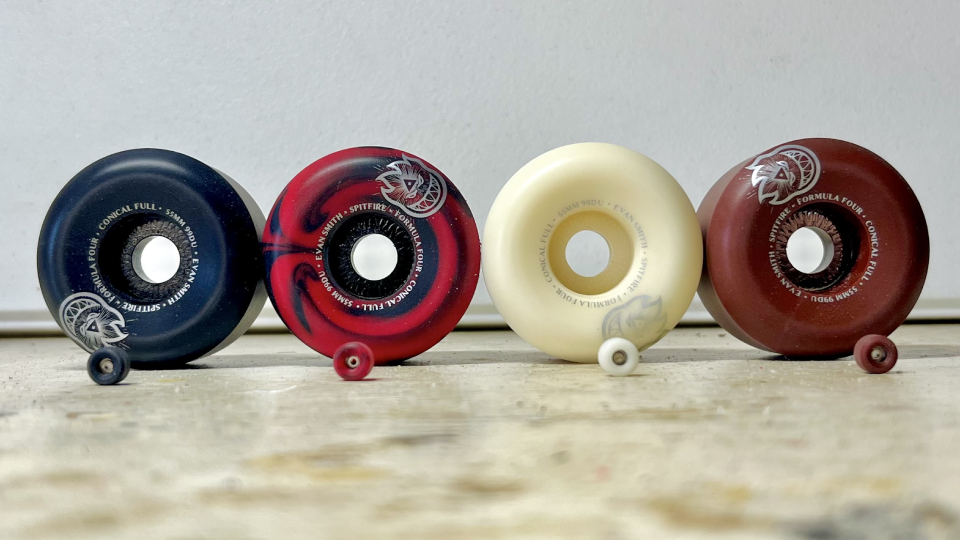 GOT OLD WHEELS? THIS GUY IS MAKING MINI FINGERBOARD REPLICAS WITH THEM
GOT OLD WHEELS? THIS GUY IS MAKING MINI FINGERBOARD REPLICAS WITH THEM
Honey, I Shrunk The Spitfires.

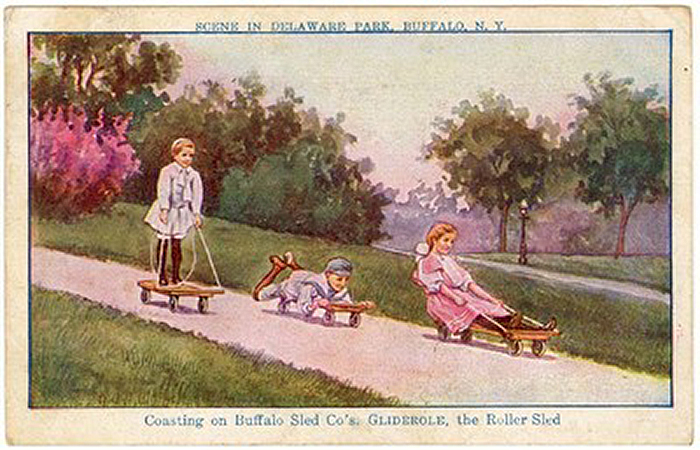
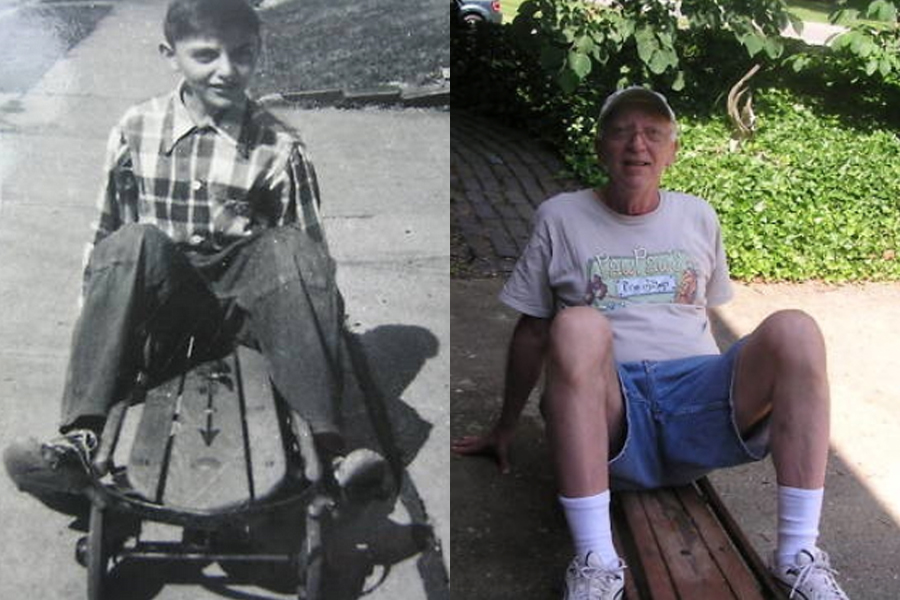
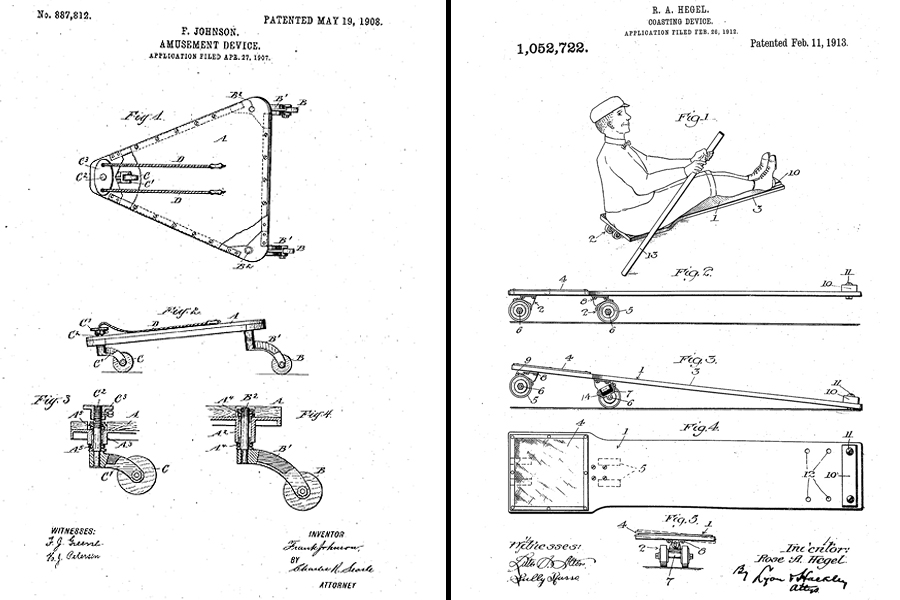
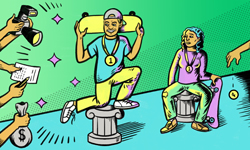

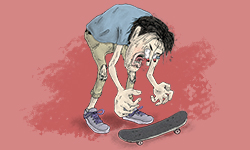
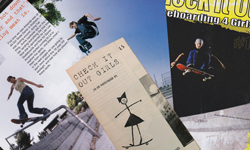

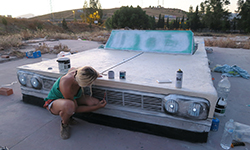
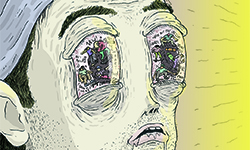
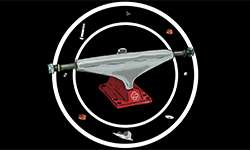
February 11, 2015 3:19 pm
Very interesting stuff.
February 11, 2015 3:28 pm
this 19th century postcard was the oldest example of a “skateboard” i was able to find when i fell into a google hole looking ->
http://i.imgur.com/7H79b0B.jpg
illustrates that the concept was there , even that far back. the rollerskate was invented in the 1770s, so ever since that point there theoretically could’ve been handbuilt boards. however the asphalt road was common nowhere until the 20th century, and even later in that century before it made it out of major major cities. so thats probably why people made peachbox scooters first instead of boards (you can use your upper body to push it across a packed dirt road).
in fact the rollerskate took another 100 years after it was created before it even became a thing, it was the advent of the gynasium and velodrome with the turn of the last century (1899-1900) that made it possible for the normal person to ride. just an interesting example of how skateboarding is influenced most by the space around it, that it took advancements in the literal society first, to make a world even capable being ridden with a tiny wheeled thing.
February 11, 2015 6:31 pm
So tight. Thanks Jenkem!
February 12, 2015 1:21 am
This is great. Aside from surfing itself, I wonder how much farther “surfing” a board down a surface of some sort (snow, sand, dirt, etc) goes back? Pretty damn far, I’d imagine.